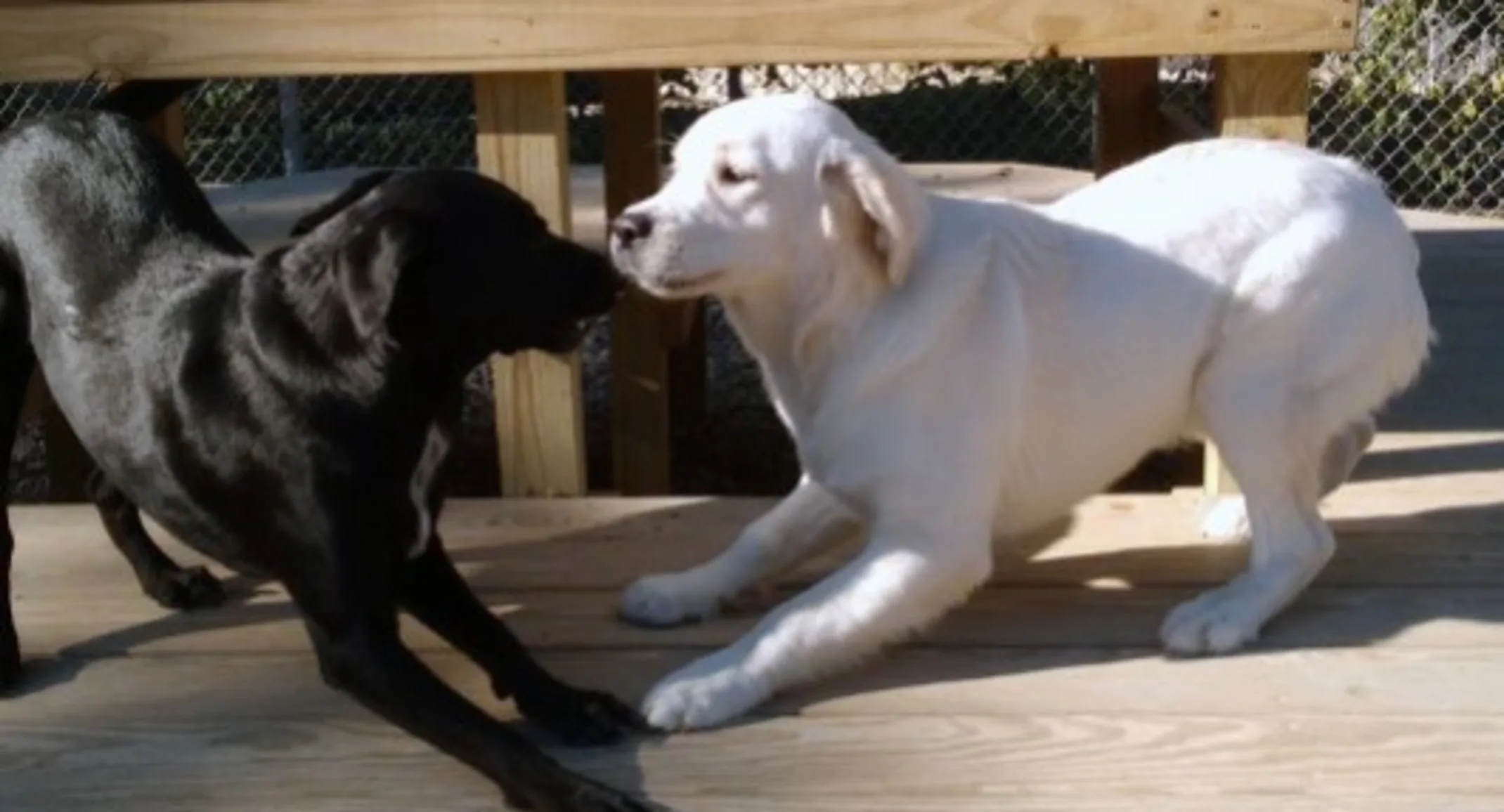Introducing New Doggy Friends
Training Tips

If you know your dog is extremely social and plays well with others, it is likely that the meeting will be a success, however, it is very important to take the necessary precautions. For the first meeting, introduce the dogs on neutral ground. In other words, don’t introduce your dog to an unfamiliar dog in your living room. There is oftentimes too much attachment to the environment for your dog, not to mention the space is probably pretty limited indoors. Introduce the dogs in the back or the front yard, while both are on leash. You’ll need two people to help introduce the two dogs this way. Begin by putting each dog on leash and standing a good distance apart. Each handler should have a treat pouch full of small, high value treats, like hotdog, cheese, or chicken. Begin by walking parallel to each other at a distance comfortable enough for the dogs that they are not being too riled up by the other dog’s presence. Treat each dog every time they glance over at the other dog. Over time, you will be able to slowly close this gap between the two dogs.
It is important to note that each handler should remain calm and relaxed during this introduction. Keep both leashes loose, since any tension on the leash can make the dog think you are uncertain or anxious about the introduction and in turn make them feel uncertain or anxious.
Throughout the entire process, it is extremely important to pay attention to each dog’s body language. If at any point either dog begins to growl or show teeth, consider taking a few paces back and increasing the distance between the two dogs. Stiff posture or a hard, intense stare at the other dog can be signals that the two may take a little bit more time before being comfortable around each other. If either dog lunges at the other dog, proceed with caution. An appropriate dog greeting looks wiggly, almost curvy, and loose, with no tension in either dog’s body.
Even if the dogs appear to make fast friends, continue to monitor them closely. A few types of play can quickly escalate to fighting, especially if the two dogs are not well acquainted. If the dogs engage in loud, vertical play, stay alert. This type of playing can often escalate quickly. Enforce breaks if need be, by putting each dog in their crate for brief “time outs” to help reset their energy. Additionally, make sure each dog is respectful of the other’s corrections (e.g., lip curling, growling, or air snap). Sometimes these corrections may sound intense or look scary, but they are a normal part of dog-dog interactions. Keep a close eye on them to make sure each dog’s signals are being respected. If you feel like one dog is bullying the other or isn’t listening to the signals, it is okay to step in between them, separate them, or take one dog out for a brief walk to help them reset their energy.
Whenever you bring a new dog into the home, make sure toys, bones, and food have all been put away. These items are fun and exciting, and as such can be sources of conflict for some dogs. To avoid any unnecessary conflict, feed each dog in their own crate.
If it is a puppy you are introducing to your dog, make sure to enforce lots of breaks. Older dogs can quickly grow tired of puppy behaviors and lose their patience. Furthermore, puppies are the furry equivalent of toddlers and need help learning when it’s time to relax. Never shy away from a little crate time!
If at any point you feel like you need help introducing your dogs, please don’t hesitate to contact a Taurus Trainer!
